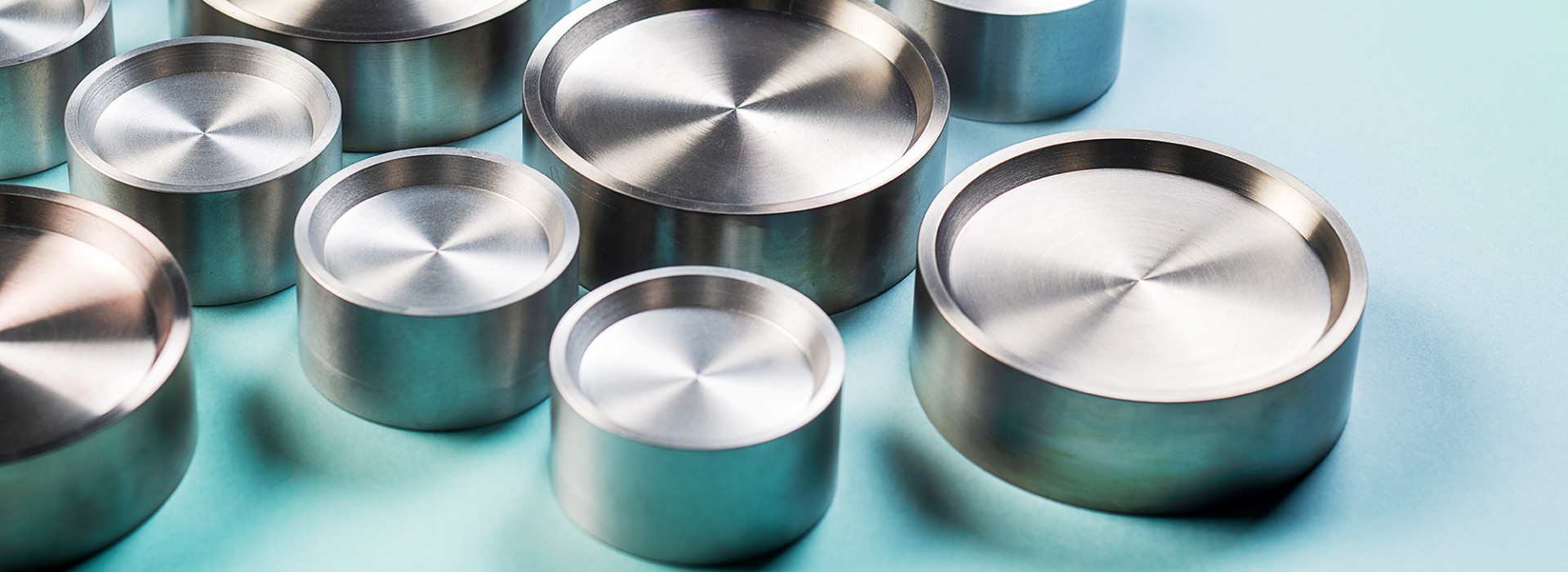Sputtering Targets
At Testbourne, we specialise in providing a comprehensive range of high-quality sputtering targets tailored to meet the diverse needs of our clients.
Our targets are available in a wide array of materials, including metals, alloys, and compound materials, ensuring that we can support various deposition requirements and applications.
Explore our materials listing for current availability, or contact us directly to discuss your project requirements. Whether you need a standard specification or a customised solution, we are here to help.
What is a Sputtering Target?
Sputtering is a proven technology capable of depositing thin films from a wide variety of materials on to diverse substrate shapes and sizes. The process is repeatable and can be scaled up from small research and development projects to production batches involving medium to large substrate areas.
To achieve the desired characteristics in a sputter deposited thin film, the manufacturing process used to fabricate the sputtering target can be critical. Whether the target material comprises only an element, mixture of elements, alloys, or perhaps a compound; the process to produce that defined material in a form suitable for sputtering thin films of consistent quality is as essential as the deposition run parameters perfected by the thin film process engineers and scientists.
Most sputtering target materials can be fabricated into a wide range of shapes and sizes. There are some technical limitations to the maximum size for a given single piece construction. In such cases, a multi-segmented target can be produced with the individual segments joined together by butt or bevelled joints. Commonly used targets are circular or rectangular, although other shapes including square and triangular designs can also be produced.
Metal Sputtering Target
The manufacturing methods for metal sputtering targets vary based on the material and application requirements. Processes include vacuum melting, rolling, hot-pressing, special press-sintering, vacuum hot-pressing, and forging. Our standard round targets range from 1" to 20" in diameter, while rectangular targets can exceed 2000mm in length, depending on the metal. Purity levels range from 99.5% to 99.9999% for some metals, tailored to specific needs. Custom designs are also available to meet unique requirements.
Compound Sputtering Target
We offer a wide range of compound sputtering targets, including oxides, nitrides, borides, sulphides, selenides, tellurides, carbides, crystalline, and composite mixtures. These targets are produced using methods like vacuum hot pressing, hot isostatic pressing, cold isostatic pressing, and cold press sintering. Sizes range from 1 inch to 20 inches in diameter, with rectangular targets up to over 1000mm in length, designed for single or multi-section configurations. To enhance performance and durability, we recommend bonding these targets to backing plates.
Rotatable Targets
Rotatable targets are essential for large-area coating applications in architectural glass and flat panel displays. They offer advantages over planar targets, including higher material utilisation, longer production runs, reduced downtime, and increased throughput. Our cylindrical magnetron sputtering targets range from 2" to 8.625" in diameter and up to 160 inches in length. Common materials include Chromium, Silver, Aluminium-Silicon, Tin, Titanium Oxide, Stainless steel, Aluminium, Tungsten, Tantalum, Molybdenum, Niobium, Copper, and Zinc alloys. Manufacturing methods include plasma spraying, casting, and extrusion.
Sputtering Targets Available With Testbourne
Testbourne supply cylindrical magnetron sputtering targets which are manufactured in many sizes, ranging from 2" up to 8.625" in diameter, with lengths from a few inches up to 160 inches.
The most commonly used C-MAG rotary targets are available in Chromium, Silver, Aluminium-Silicon, Tin, Titanium Oxide, Stainless steel, Aluminium, Tungsten, Tantalum, Molybdenum, Niobium, Copper and Zinc alloys.
The standard manufacturing methods are plasma spraying onto the base tubes, casting and extrusion of the complete assembly.
Please get in touch to discuss your sputtering target requirements.
